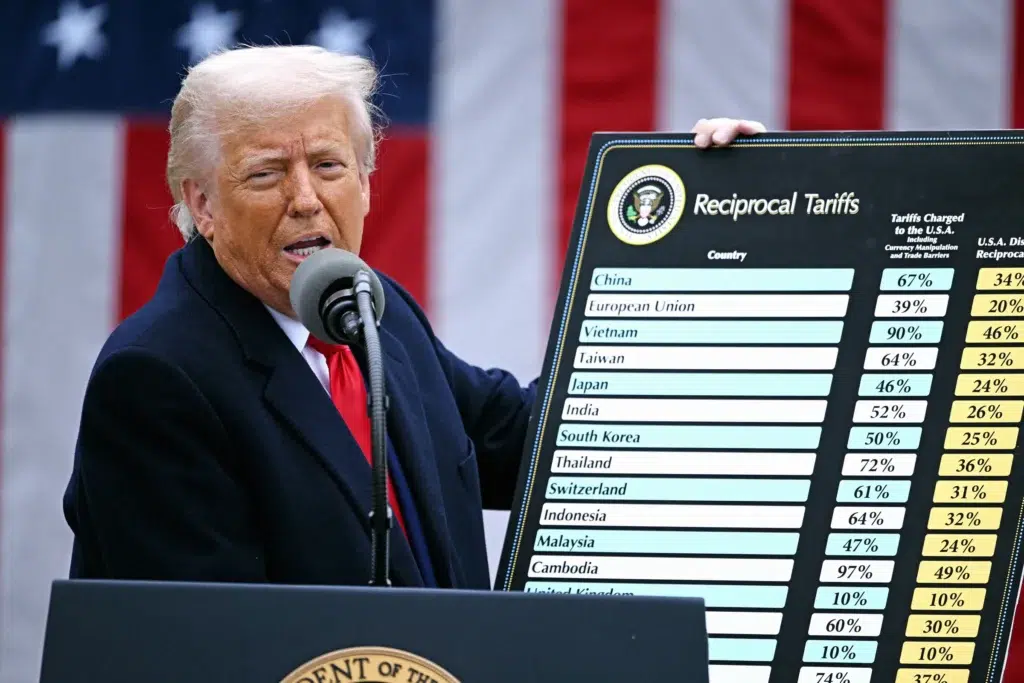Asian economies are set to face sweeping new U.S. tariffs as President Donald Trump introduces “reciprocal tariffs” targeting nearly 90 countries. The new policy, announced on Wednesday and branded as “Liberation Day,” aims to address trade imbalances by imposing duties equivalent to what the U.S. claims other nations charge American exports.

Starting April 5, a universal 10% tariff will be applied to all imports entering the U.S. However, dozens of countries, particularly in Asia, will face significantly higher tariffs from April 9, with some rates reaching nearly 50%.
Asian Nations Face Steep Tariffs
The hardest-hit nations are largely in Asia, with countries such as Cambodia, Vietnam, and Laos facing tariffs of over 45%. The full list of tariffs on key Asian exporters includes:
| Country | New U.S. Tariff Rate |
|---|---|
| Cambodia | 49% |
| Laos | 48% |
| Vietnam | 46% |
| Thailand | 36% |
| Bangladesh | 37% |
| Taiwan | 32% |
| China | 34% (plus an existing 20%) |
| India | 26% |
| South Korea | 25% |
| Japan | 24% |
The Trump administration stated that these rates are based on the import duties and trade restrictions these nations impose on U.S. goods. “Reciprocal. That means they do it to us, and we do it to them,” Trump said during his announcement.
Impact on Trade and Inflation Risks
Asian economies, many of which rely on exports to the U.S., could experience significant disruptions. Economists warn that the tariffs could raise costs for American businesses and consumers while destabilizing supply chains.
“Countries like Vietnam, which have been gaining traction as manufacturing hubs, will now have to rethink their competitiveness in the U.S. market,” said Dr. Lin Wei, a trade economist in Singapore.
Beyond Asia, there is growing concern over potential retaliatory tariffs from affected nations, which could escalate into a broader trade war. Moody’s Analytics warns that if retaliatory measures are implemented, both the U.S. and its trade partners could face a recession.
Regional Response and Uncertainty
While China has hinted at possible countermeasures, other Asian nations are reviewing their trade policies. The tariffs could also shift global trade dynamics, pushing more countries to strengthen regional partnerships and seek alternative markets.
“This is a major shift that will impact businesses across Asia,” said Farah Rahman, an international trade consultant. “Exporters will need to reconsider their U.S. market strategies and explore new trade alliances.”
With the April 9 implementation date approaching, businesses across Asia are bracing for the economic fallout, while governments weigh their next steps.






